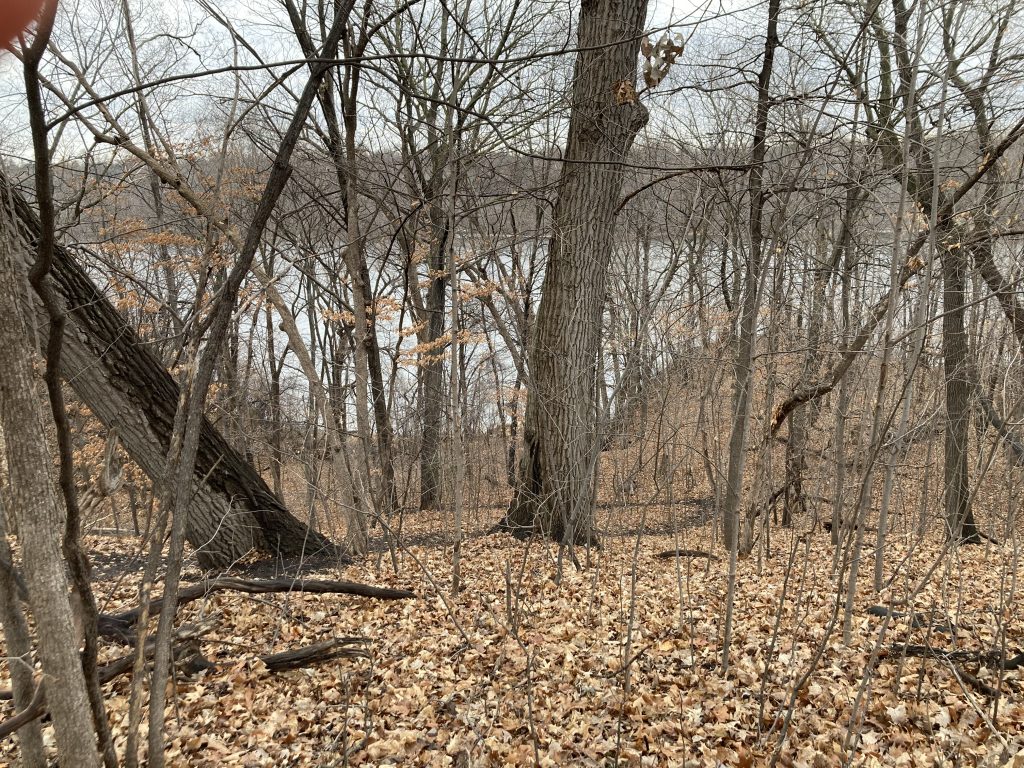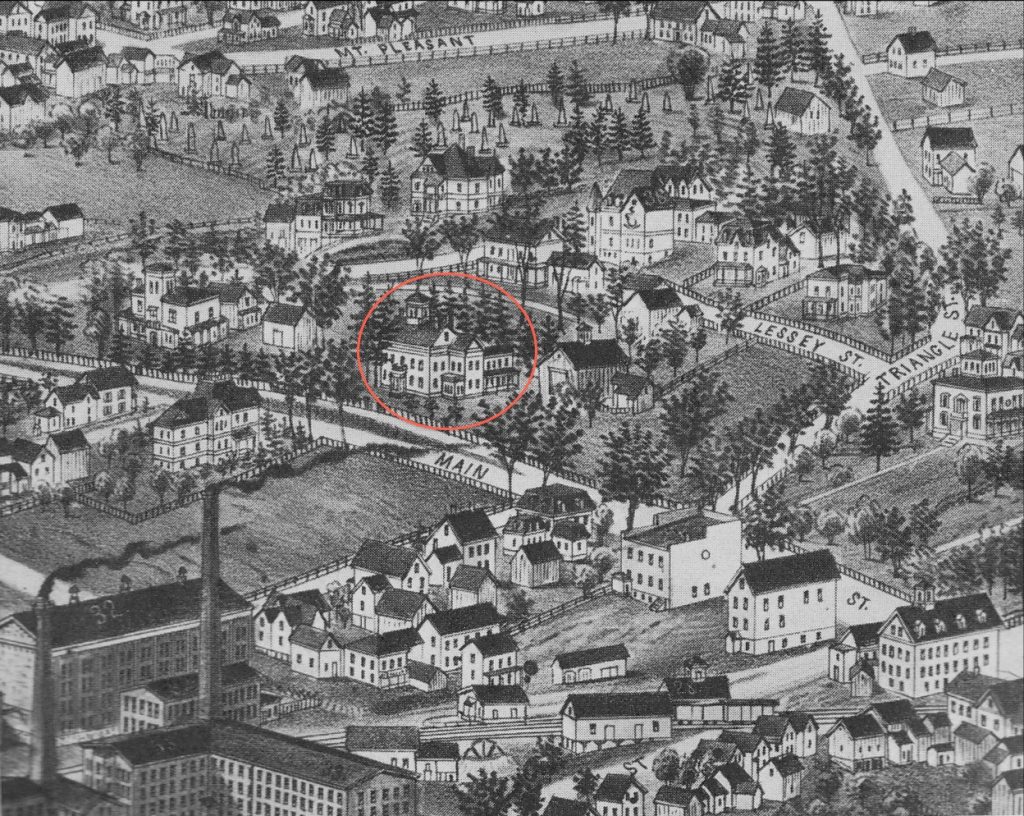3.65 miles
locks and dam #1 hill loop
38 degrees
It’s supposed to rain all day, starting around 9 am, so I went out for a shorter run at 8. Made it back before it started. Dark and damp. Long line-ups of cars, commuters heading to work, I suppose. I liked watching their bright headlights cut through the gray air. At 42nd street a runner whose cadence sounded much faster than mine passed me. I enjoyed watching the steady, relaxed rhythm of her feet rising and falling, up down, up down. Such grace!
I remember looking at the river and wondering how high it was, but I don’t remember much else about it, except: at the bottom of the locks and dam hill, right by the closed gate, the water was foaming and contained some trash. Yuck.
Heard traffic rushing by, water gushing out of the sewer pipe at 42nd, and my feet shuffling on the grit as I ran south. After running up the hill I stopped to put in music — Kool and the Gang Essentials — and discovered that the soft rubber for my right ear bud was missing. Bummer. Decided just to put the left one in and listen to the gorge and Kool and the Gang as I ran back north.
Yesterday I finished a solid draft of my 8th Ishihara plate poem. Hooray! Very happy with it, especially how I was able to finally (after 2 years of trying) to find a place for a lovely image of the sparkle a swimmer makes as their hands enter the water and light bounces off the ripple they create. Here’s my description in the poem, which I’m tentatively titling, “The Glitter Effect”:
all around swimmers’ hands pierce the
water, stroke after stroke. Each point of contact be
tween lake finger and light sparks in amber and bu
ilds a glittery bridge from body to body to body
until we reach the other side.
Should it be sparks in amber or sparks amber? Maybe it should our hands instead of swimmers’ hands? And, what about until the other side is reached? (too passive?)
I also like the ending, although I think the poem might need to do a little more work to get to it:
This is not a
poem mourning the loss of cone cells.
This is not even a poem. Th
is a compass.
Maybe it should be, This is not even a poem, but a compass or This is not even a poem. It is a compass?
Found this poem the other day. Birds!
After “How Far Away We Are,” by Ada Limòn
So we might understand each other better,
I’ve given up on trying to listen for birds
in the morning. But, I am never without them.
The internet is a pocket forest: a green parrot
named Tico who harmonizes in soaring vibrato
to classic rock songs, woolen baby emperor penguins
with prehistoric feet, potoo birds whose fluty songs
haunt even after their diamond mouths close,
a raven named Fable who inflates her blue-black head
feathers before she declares practiced “Mwahs!”
in the same tone as her keeper, and a cockatiel
who sings an Apple ringtone (you know the one)
when it’s upset. How incredible it is that they all
perch together. How to tell you: It’s been years since
I’ve wanted to die, but I still don’t understand why
sometimes it feels so difficult to brush my teeth,
start my day, end my day. Why I always miss you,
but sometimes I can’t even think of you. Why, when
we are separated, when my mind is difficult,
birds are easy. Today, after watching ten videos
of hummingbirds before noon, I feel light enough to push
off my comforter’s irresistible smother and flit around
the house. I want the whir of a sequined green body,
red-adoring eyes, and narrow tongue coiling into skull,
as much as I want the steady sleep-twitch of your
warm body pressed against me. I’m passing this idea
to you: One day, maybe we could plant zinnias
and cardinal flowers in a ruby cluster and wait
for hummingbirds to unfurl and flick their tongues
into an easy sweetness. We could fill two glasses
with cold water and put them on the nightstand.
We could watch together, even on a palm-sized screen—
floating swans, a white, crested pet pigeon waddling
herself to bed, sprinting ostriches, a parakeet father
insistently squawking, “iloveyoubabies gonnafeedthebabies.”
Lines I love and want to remember:
The internet is a pocket forest:
when my mind is difficult,/birds are easy.
I want the whir of a sequined green body,/red-adoring eyes, and narrow tongue coiling into skull,
follow-up, a few hours later: Scrolling through Instagram, I came across a wonderful poem by Naomi Shihab Nye. Around 5 or 6 years ago, when I lost enough cone cells that I could no longer ignore that something wasn’t right with my eyes, I would always pretend to see the bird that someone else was pointing out. Now, I’m more likely to admit I can’t see it. Perhaps when the novelty of knowing what’s wrong with me and not having to pretend to see what I can’t wears off, I’ll go back to saying Yes!
Yes Yes
I see it
so they won’t keep telling you
where it is
note: Nye’s reading of the poem on the site is wonderful.

